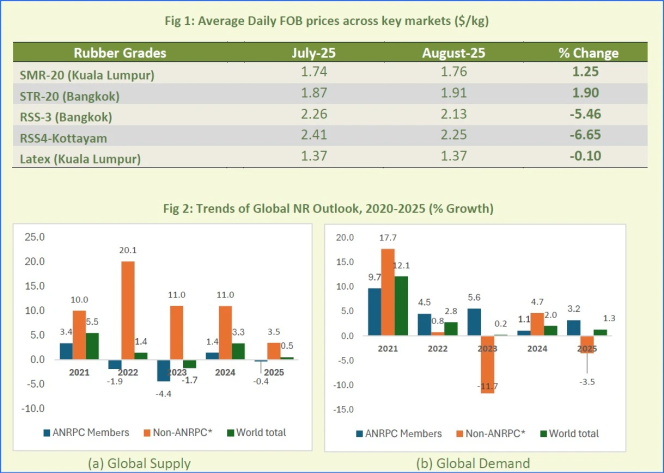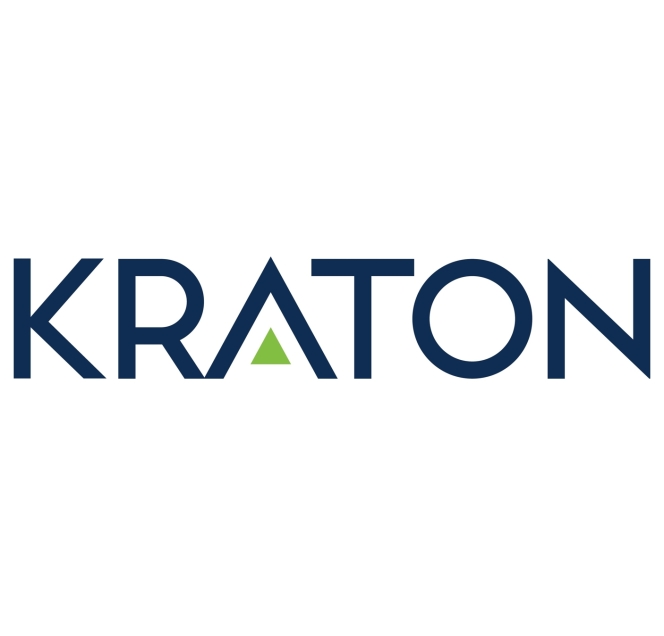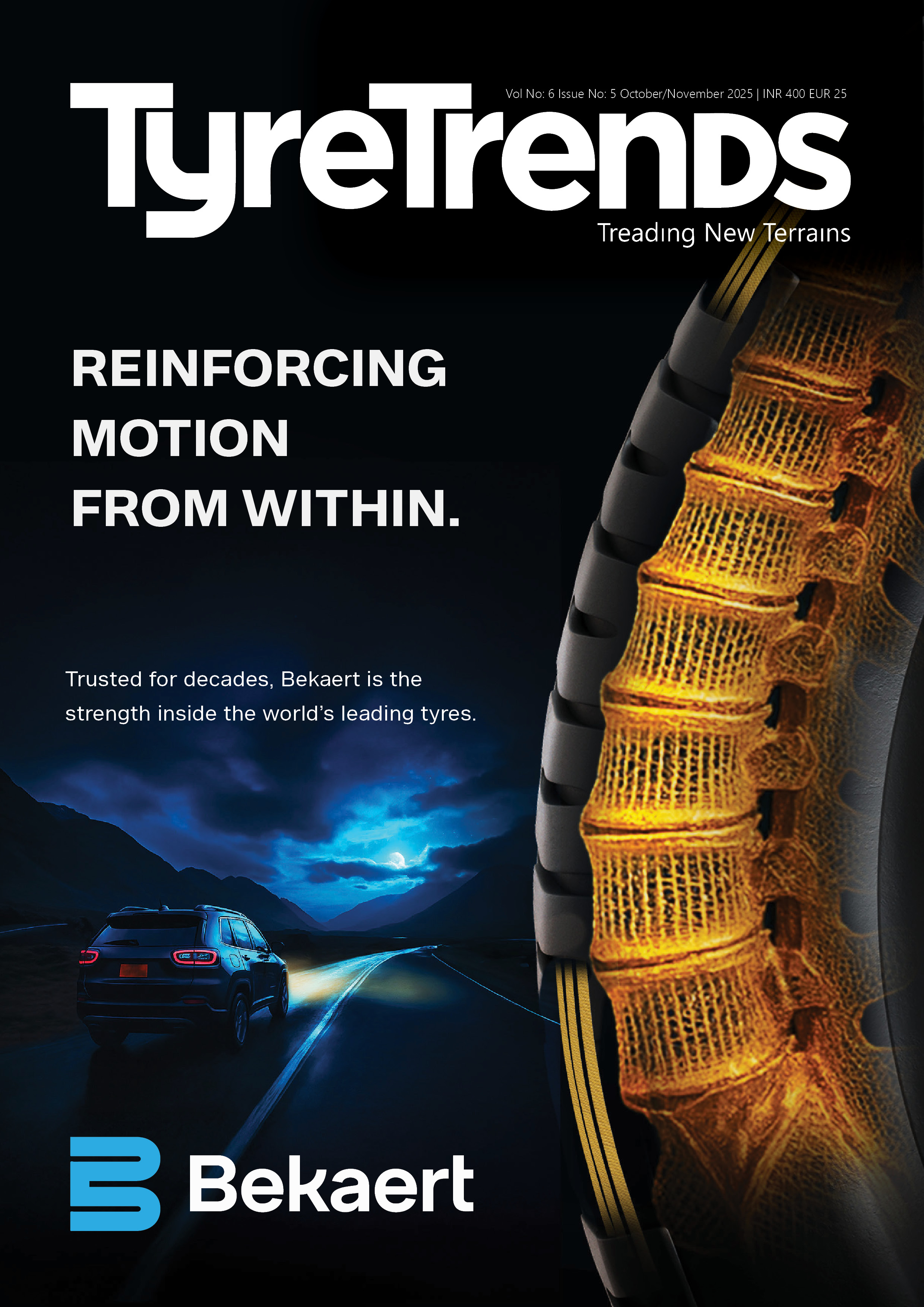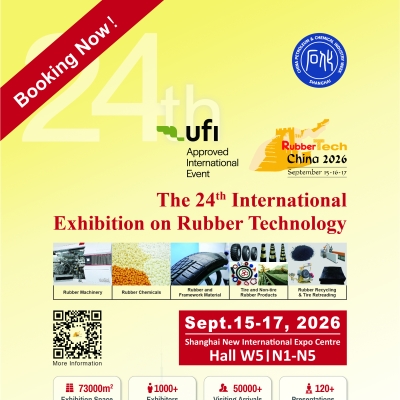
Tyres do not typically carry the weight of our vehicles but it is only the air inside them does. There are three basic elements which determine the load capacity of a tyre namely, the size of the air chamber formed between the tyre and wheel, the strength provided by the engineering construction of tyre to hold air pressure, and the amount of air pressure actually in the tyre.

Most flat tyres or zero pressure air are the result of slow leaks that go unnoticed and allow the tyre's air pressure to escape over time (Fig.1). Therefore, monitoring tyre air pressure in real-time is extremely important. Fortunately, in these days we practically have such devices inbuilt in tyre, called, Tyre Pressure Monitoring System or TPMS, Fig.2. Run Flat Tyres (RFT) are typically designed passenger car tyre or light truck tyres or SUVs to run even when they are flat or when there is zero inflation pressure. It is more of a safety issue - it's design allows you to continue driving in deflated condition to a point were you can safely get the tyre changed or repaired. To all RFT, therefore, it is was required to fit in TPMS system (Fig.2) to indicate driver that the tyre is running with low pressure or tyre is failed and is under zero pressure now.

Tyre pressure sensor (pressure transmitter) converts the physical quantity 'tyre pressure' into an industry-standard signal , that enables the driver if the tyre pressure is becoming low or the tyre has already failed during driving (Fig.2). Mandates for TPMS technology in new cars have been continued to proliferate in the 21st century in Russia, the EU, Japan, South Korea and many other Asian countries. As of November 2014, the above fitment rate stands had been to ~ 54% of passenger cars.
Tyre pressure has profound influence on vehicle safety and efficiency. Tyre-pressure monitoring (TPM) was first adopted by the European market as an optional feature for luxury passenger vehicles in the 1980s. The first passenger vehicle to adopt TPM was the Porsche 959 in 1986, using a hollow spoke wheel system. In 1996 Renault used the Michelin PAX system. In the United States, TPM was introduced by General Motors for the 1991 model year for the Corvette in conjunction with Goodyear run-flat tyres. The system uses sensors in the wheels and a driver display which can show tyre pressure at any wheel, plus warnings for both high and low pressure (Fig.2). It has been standard on Corvettes ever since.
The dynamic behavior of a pneumatic tyre is closely connected to its inflation pressure. Key factors like braking distance and lateral stability require the inflation pressures to be adjusted and kept as specified by the vehicle manufacturer. Extreme under-inflation can even lead to thermal and mechanical overload caused by overheating and subsequent, sudden destruction of the tyre itself. Additionally, fuel efficiency and tyre wear are severely affected by under-inflation. Tyres do not only leak air if punctured, they also leak air naturally (air permeability), and over a year, even a typical new, properly mounted tyre can lose from 3 to 9 psi, roughly 10% or even more of its initial pressure.

Maintaining proper tyre inflation is essential to vehicle handling, overall tyre performance, and load carrying capability. A properly inflated tyre will reduce tread movement, reduce rolling resistance, and increase water dispersion. Reduced tread movement gives the tyre a longer tread life. Reduced rolling resistance, the force required to roll a loaded tyre, results in increased fuel efficiency. Increased water dispersion decreases the possibility of hydroplaning. Both over-inflation and under-inflation can cause premature tread wear and possible tyre failure. Over-inflation can result in decreased traction and the inability to absorb road impact. Overinflated tyres will show premature wear in the centre of the tread. On the other hand, under inflation will cause sluggish tyre response, decrease fuel economy, excessive heat buildup, and tyre overload. An under inflated tyre will show premature wear on both outside shoulders (Fig.3).
The European Union reports that an average under-inflation of ~ 6psi , produces an increase of fuel consumption of 2% and a decrease of tyre life of 25%. The European Union concludes that tyre under-inflation today is responsible for over 20 million liters of unnecessarily-burned fuel, dumping over 2 million tones of CO2 into the atmosphere, and for 200 million tyres being prematurely wasted worldwide. In 2018, a field study on TPMS shows that TPMS fitment reliably prevents severe and dangerous under-inflation and hence yields the desired effects for traffic safety, fuel consumption and emissions. The above study also showed that there is no difference in effectiveness between dTPMS and iTPMS and that the TPMS reset function does not present a safety risk.
The Tyre Pressure Monitoring System (TMPS) is an electronic system in the vehicle that monitors tyre air pressure and alerts the driver when it falls dangerously low. This system involves a pressure sensor (Fig.4) fitted in tyre air filling valve. However, a given TPMS system can only work with compatible sensors in the tyres.

TPMS notifies on vehicle dash board when vehicle’s tyre pressure is low or is going flat and this help to maintain proper tyre pressure (Fig.2). TPMS can directly or indirectly, increase vehicle safety on the road by improving your vehicle’s handling, decreasing tyre wear, reducing braking distance and bettering fuel economy. The significant advantages of TPMS are summarized as follows:
- Fuel savings: For every 10% of under-inflation on each tyre on a vehicle, a 1% reduction in fuel economy will occur. In the United States alone, the Department of Transportation estimates that under inflated tyres waste 2 billion US gallons (7,600,000 m3) of fuel each year.
- Extended tyre life: Under inflated tyres are the major cause of tyre failure and contribute to tyre disintegration, heat buildup, ply separation and sidewall/casing break downs. Further, a difference of 10 psi in pressure on a set of duals literally drags the lower pressured tyre 2.5 metres per kilometre (13 feet per mile). Moreover, running a tyre even briefly on inadequate pressure breaks down the casing and prevents the ability to retread. It is important to note that not all sudden tyre failures are caused by under-inflation. Structural damages caused, for example, by hitting sharp curbs or potholes, can also lead to sudden tyre failures, even a certain time after the damaging incident. These cannot be proactively detected by any TPMS.
- Improved safety: Under-inflated tyres lead to tread separation and tyre failure, resulting in 40,000 accidents, 33,000 injuries and over 650 deaths per year only in USA. Further, tyres properly inflated add greater stability, handling and braking efficiencies and provide greater safety for the driver, the vehicle, the loads and others on the road.
- Environmental efficiency: Under-inflated tyres, as estimated by the Department of Transportation, release over 26 billion kilograms (57.5 billion pounds) of unnecessary carbon-monoxide (CO) pollutants into the atmosphere each year in the United States alone.

A TPMS reports real-time tyre-pressure information to the driver of the vehicle, either via a gauge, a pictogram display, or a simple low-pressure warning light (Fig.2).
TPMS can be divided into two different types – direct (dTPMS) and indirect (iTPMS). TPMS are provided both at an OEM (factory) level as well as an aftermarket solution (replacement market). TPMS is increasing consumer demand for avoiding traffic accidents, poor fuel economy, and increased tyre wear due to under-inflated tyres through early recognition of a hazardous state of the tyres.
A sensor based TPMS has a pressure monitoring sensor fixed inside the wheel and tyre assembly(Fig.5). This is usually clamped to the wheel and constantly monitors the internal pressure of the tyre . This information is relayed to a receiving unit on the vehicle body which is connected to a processing unit in the electronics system of the vehicle. This alerts the driver to a loss in tyre pressure.

There are two different types of systems being used today: Direct TPMS and Indirect TPMS. Direct (dTPMS) uses a sensor mounted in the wheel to measure air pressure in each tyre. When air pressure drops 25% below the manufacturer’s recommended level, the sensor transmits that information to the computer system of car and triggers your dashboard indicator light (Fig.2).
Indirect (iTPMS) works with Antilock Braking System’s (ABS) wheel speed sensors. If a tyre’s pressure is low, it will roll at a different wheel speed than the other tyres. This information is detected by the computer system of car , which triggers the dashboard indicator light (Fig.2). The purpose of the TPMS is to alert you when tyre pressure is too low and could to create unsafe driving conditions. If the light is illuminated, it means your tyres could be underinflated, which can lead to undue tyre wear and possible tyre failure.
Direct TPMS
Direct TPMS (dTPMS), is a directly measuring hardware-based systems. They could be fitted in each wheel, most often on the inside of the valve (Fig.6), there is a battery-driven pressure sensor which transfers pressure information to a central control unit which reports it to the vehicle's instrument cluster or a corresponding monitor. Some units also measure and alert temperatures of the tyre as well.
These systems can identify under-inflation in any combination, be it one tyre or all, simultaneously. Although the systems vary in transmitting options, many TPMS products (both OEM and aftermarket) can display real time tyre pressures at each location monitored whether the vehicle is moving or parked. There are many different solutions, but all of them have to face the problems of exposure to hostile environments. The majority are powered by batteries which limit their useful life. A direct TPMS sensor consists of the following main functions requiring only a few external components, that is mounted to the valve stem inside the tyre:
- Pressure sensor
- Analog-digital converter
- Microcontroller
- System controller
- Oscillator
- Radio frequency transmitter
- Low frequency receiver
- Voltage regulator (battery management)
InDirect TPMS

Indirect TPMS (iTPMS) uses to detect the differing speed of revolution of a wheel with a reduced circumference, caused by a reduction in tyre pressure . There may be dashboard icons for low pressure warning icon or system failure icon (Fig.2). This system uses the ABS or the Antilock Braking System of the vehicle to monitor the rotation speed of the individual wheels. If a deflation of a tyre occurs the resulting increase in wheel speed triggers the TPMS and advises the driver accordingly (Fig.7).
Advantages of the ABS based system include the fact that the system uses technology and equipment that is already fitted to the vehicle. Also there are no sensors fitted inside the wheel/tyre assembly which makes the tyre fitting process easier than the sensor based systems.
Dr Samir Majumdar, Rubber Consultant (India & Asia pacific), has served in leading tyre companies like JK Tyre, Kyoto Japan Tire, among others. He was technical and R&D head (Asia Pacific) in ExxonMobil. He has authored several research papers and technical books. smajumdar501234@yahoo.co.in
Global Natural Rubber Market Tightens Amid Improved Demand, ANRPC Reports
- By TT News
- November 07, 2025

The global natural rubber (NR) market experienced fluctuating prices in August 2025 as supply constraints coincided with signs of improving demand, the Association of Natural Rubber Producing Countries (ANRPC) said in its latest Monthly NR Statistical Report.
The association noted that seasonal factors supported stronger consumption, particularly in China, where declining port inventories signalled healthier demand. However, heavy rainfall and labour shortages in key producing regions curtailed tapping activities, tightening supply conditions.
“Natural rubber prices experienced a fluctuating trend due to several factors, including constrained supply and improving demand,” ANRPC said. “Seasonal factors boosted consumption, particularly in China, where inventory reductions at major ports indicated improved demand. However, rainfall and labour shortages in producing regions limited tapping activities, tightening supply.”
According to updated data from member countries, global natural rubber production is projected to increase by 0.5 percent in 2025 compared with 2024, while demand is expected to grow by 1.3 percent over the same period.
The association said market sentiment had turned “increasingly optimistic” with stronger purchasing interest, driven by the traditional peak season for natural rubber, especially from the all-steel tyre and heavy-duty truck segments.
The ANRPC encouraged subscribers and stakeholders seeking more in-depth insights to refer to the full report or contact the ANRPC Secretariat for subscription details.
India Opens Anti-dumping Probe Into Halobutyl Rubber Imports From China, Singapore And US
- By Sharad Matade
- November 06, 2025

India has launched an anti-dumping investigation into imports of Halo-Isobutene-Isoprene Rubber (HIIR) from China, Singapore and the United States, following a complaint from Reliance Sibur Elastomers Private Limited, the Directorate General of Trade Remedies (DGTR) said in a notification.
The domestic producer alleged that the three countries were exporting the rubber to India at unfairly low prices, causing injury to the local industry. The company has sought the imposition of anti-dumping duties on the product, which is used in tyre inner liners, hoses, seals, tank linings, conveyor belts and protective clothing.
The DGTR said there was prima facie evidence that imports had risen “significantly” and were being sold below normal value, resulting in price depression and affecting the domestic manufacturer’s capacity utilisation and profitability. The authority noted that the dumping “is causing material injury to the domestic industry”.
The investigation will cover the period from July 2024 to June 2025, with an examination of injury trends dating back to April 2021.
HIIR, also known as halobutyl rubber, is classified under the broader synthetic rubber tariff category. Reliance Sibur Elastomers is currently the only producer of the material within India.
If the investigation confirms dumping and injury, the DGTR may recommend the imposition of duties to offset the impact and “remove the injury to the domestic industry”. Interested parties have 30 days to submit data and make their representations to the authority.
Global Carbon Black Market To Hit USD 44.8 Bln By 2034, Driven By Tyre And Autom Demand
- By TT News
- November 06, 2025

The global carbon black market is projected to grow from USD 27.88 billion in 2024 to USD 44.77 billion by 2034, expanding at a compound annual growth rate (CAGR) of 4.85 percent between 2025 and 2034, according to a new report by Towards Chemical and Materials, a research arm of Precedence Research.
The study estimates that the global market volume will rise from around 15.15 million tonnes in 2025 to 21.83 million tonnes by 2034, growing at a CAGR of 4.14 percent, driven primarily by increasing demand for tyres, automotive components and high-performance plastics.
Carbon black – a fine black powder made through the incomplete combustion of hydrocarbons – is a critical material used to reinforce rubber in tyre production and enhance strength, durability and UV resistance in plastics, coatings, and batteries.
Asia Pacific accounted for about 58 percent of global market share in 2024 and is expected to remain the largest and fastest-growing regional market, supported by expanding tyre and rubber manufacturing bases in China, India and Southeast Asia. The region’s carbon black market was valued at USD 16.95 billion in 2025 and is projected to reach USD 26 billion by 2034.
“The Asia Pacific region continues to lead both in production and consumption of carbon black, owing to its strong automotive, tyre and plastics industries,” the report noted, adding that China remains the world’s largest producer and consumer.
The furnace black segment dominated the market in 2024, accounting for about 60 percent of global industry share, due to its superior reinforcing properties in tyres and versatility in plastics and coatings. Meanwhile, the tyres and rubber products segment held a 55 percent share, reflecting the material’s indispensable role in the automotive sector.
Performance applications such as batteries, conductive polymers, and specialty coatings are emerging as key growth drivers. Demand for specialty carbon black and conductive grades is rising with the proliferation of electric vehicles, renewable energy systems, and electronics manufacturing.
Artificial intelligence (AI) is also shaping the carbon black industry, with automation and predictive analytics enhancing process efficiency, product consistency, and sustainability, the report said. AI-driven systems are enabling real-time monitoring and predictive maintenance in production plants, reducing waste and energy consumption.
Sustainability remains a key trend, with manufacturers investing in greener technologies, renewable feedstocks and recovered carbon black (rCB) from recycled tyres to meet circular economy goals. “Turning end-of-life tyres and rubber waste into recycled carbon black is opening new sustainable pathways for producers,” the study noted.
Among key players profiled in the report are Tokai Carbon Co., Ltd., Continental Carbon, Jiangsu C-Chem Co., Ltd., Himadri Speciality Chemical Ltd., Sid Richardson Carbon & Energy Company, Cancarb Limited, Philips Carbon Black Ltd., OCI Company Ltd., Columbian Chemicals Co. (Birla Carbon), Aditya Birla Group, and Raven SR, LLC.
Recent industry developments include PCBL Chemical Ltd.’s establishment of a wholly owned US subsidiary in Delaware in July 2025 to enhance supply chain localisation and strengthen its North American footprint, as well as the West Bengal government’s efforts to attract foreign investment in its carbon black industry to support the electric vehicle, tyre, and battery markets.
The report also forecasts rapid growth in North America, fuelled by clean manufacturing practices, sustainable process adoption and expansion in high-performance plastics and battery applications. Europe, meanwhile, is benefiting from stricter environmental regulations and the EU Green Deal, which are promoting eco-friendly and specialty grades.
The global carbon black market is expected to maintain steady long-term growth as manufacturers diversify into advanced applications and invest in sustainable production technologies to meet evolving industrial and environmental demands.
Kraton To Streamline Berre Polymer Operations Focus
- By TT News
- October 26, 2025

Kraton Corporation, a leading global producer of speciality polymers and high-value biobased products derived from pine chemicals, has revealed a new strategic initiative for its Berre, France facility. The plan involves streamlining its polymer operations to concentrate exclusively on manufacturing USBC products, which will result in the cessation of HSBC production at that site.
This move is designed to bolster Kraton's long-term competitiveness by optimising its manufacturing footprint in reaction to a global overcapacity for HSBC. The company has formally started an information and consultation process with the local Works Councils, with a final decision expected following this mandatory period. The company has reaffirmed its commitment to supplying HSBC from its broader global network and to leveraging its worldwide presence to continue adapting to market demands.
Prakash Kolluri, President, Kraton Polymers, said, “Our aim with this plan is to strengthen Kraton’s long-term competitive position by optimising our manufacturing footprint in response to changing market dynamics associated with global overcapacity of HSBC production capability. With this step, we are preparing Kraton for a sustainable future by securing Kraton’s position as the leading global HSBC producer. Kraton is fully committed to supporting our customers through this transition with supply of HSBC products produced within our unmatched global manufacturing network. We recognise the impact of these actions, and are committed to a safe, respectful and supportive transition. The health, safety and well-being of the employees remain our top priorities.”







Comments (0)
ADD COMMENT